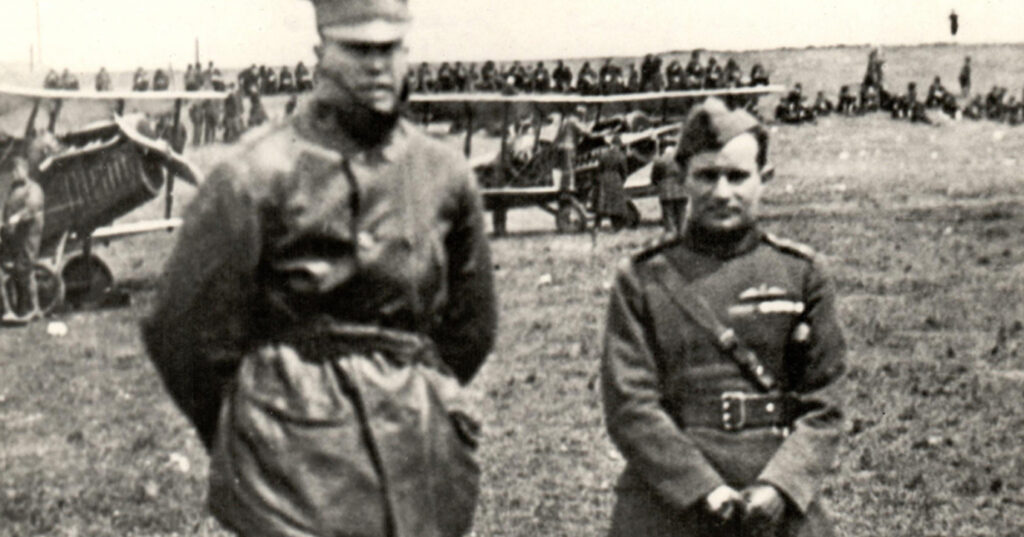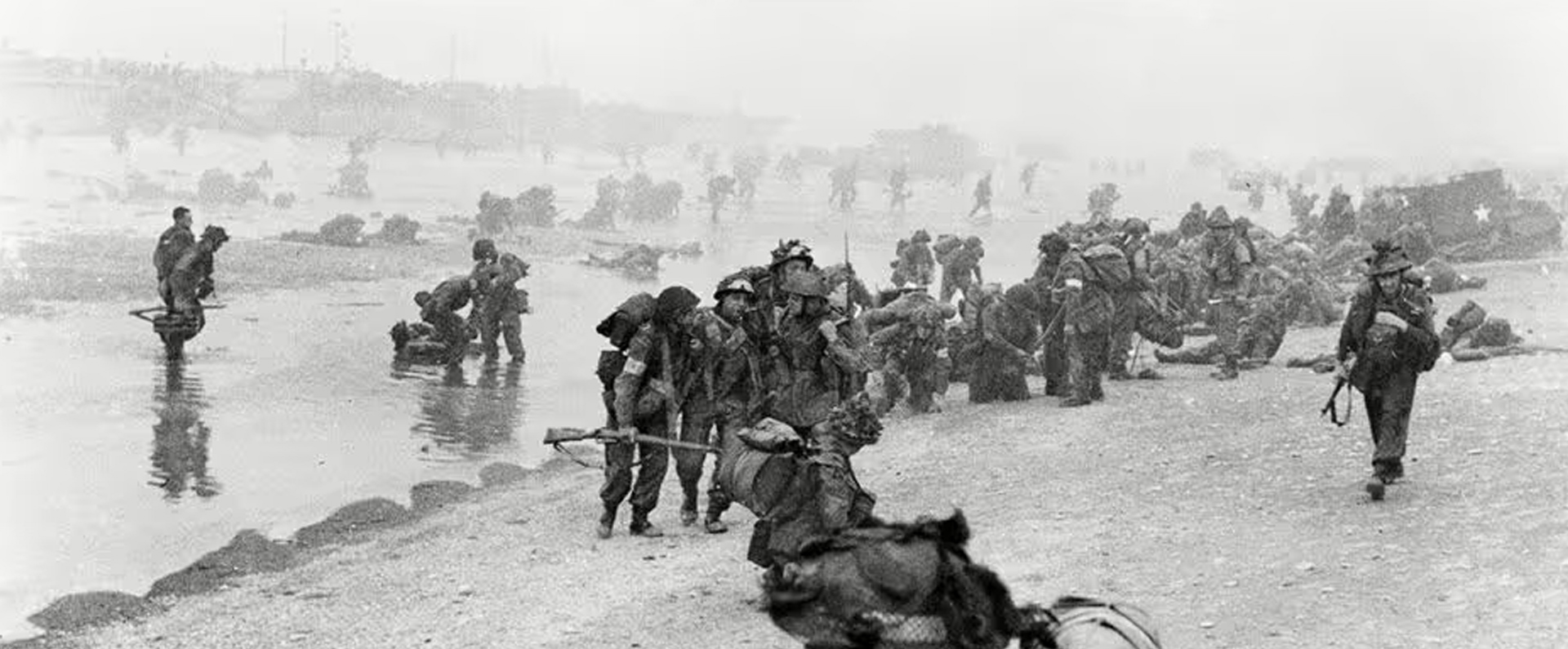
Published in Britain at War in August 2020.
Flight Lieutenant Andrew Frederick Weatherby Beauchamp Proctor VC, DSO, MC & Bar, DFC
The medal group of Flight Lieutenant Andrew Beauchamp Proctor VC, DSO, MC & Bar, DFC will always have a special place in my heart. When I purchased it privately in 2016, his VC became the 200th in the Ashcroft collection – a remarkable milestone.
Headmaster’s son Andrew Frederick Weatherby Proctor – his full name at birth – was born in the small port of Mossel Bay, Cape Colony, South Africa, on September 4 1894.
He attended the oldest school in the country, South African College School in Cape Town. At the time, Proctor also lived in the oldest residence in the country, College House Residence, where his father was warden. At the outbreak of the First World War in August 1914, he was aged 19 and studying for an engineering diploma.
Eager to play his part in the Allied cause, Proctor broke off from his studies and enlisted as a signaller into the Duke of Edinburgh’s Own Rifles (“The Rifles”) in October 1914, having just turned 20.
At the start of the war, Proctor, just 5 ft 2 ins tall, preferred to be called “Frederick” rather than “Andrew”. Soon he played a full part in the German South-West Africa campaign, which saw the enemy defeated and Proctor demobbed in August 1915 so he could resume his studies.
Late in 1916, Proctor took some further personal decisions relating to his name. He dropped “Frederick” on the grounds that it sounded too Germanic and also adopted a double-barrelled surname but without a hyphen (though it was often inserted in error in future), becoming known as “Andrew Weatherby Beauchamp Proctor”.
Keen “to do his bit” as the war dragged on, he responded to a British recruiting campaign and volunteered for the Royal Flying Corps (RFC). On March 12 1917, he attested as an air mechanic, 3rd class, before sailing to England for pilot training, eventually joining 84 Squadron, RFC.
When I reflect on some of these courageous early pilots from the Great War, I always remind myself that when the First World War began the “sport” of flying was less than 11 years old.
The first powered flight by the Wright brothers had only taken place in December 1903 and yet, by the final year of the Great War, when flying was still less than 15 years old, Flight Lieutenant Andrew Beauchamp Proctor and those like him were participating in highly-skilled, life-or-death dogfights.
When Beauchamp Proctor began flying in 1917, his lack of height caused problems: he was too short to be able to reach the rudder bar and was also too low down in his seat for a cockpit view. However, he overcame these issues with adjustments to his aircraft: his seat was raised so he could have a better view from the cockpit and so he could reach controls. Blocks of wood were also fastened on his rudder bar so he could reach it.
On September 21 1917, the squadron, equipped with SE5A Scouts, arrived in the war zone, but Beauchamp Proctor saw Christmas 1917 and the New Year pass without the evidence to give him the solo victory that he desired.
His fortunes changed on January 3 1918 when he spotted an enemy two-seater during an afternoon patrol. Beauchamp Proctor attacked it and witnesses saw it spiral into the ground for his first confirmed “kill”.
In February, he took part in an action for which he was later awarded the Military Cross (MC), when he attacked a fleet of enemy Scouts. By March, he had eight confirmed “kills” but he almost perished himself in a landing accident.
On April 1 1918, the date on which the Royal Air Force (RAF) was created, Beauchamp Proctor was promoted to lieutenant. A week later, he was promoted to acting captain and flight commander. On May 28, he was awarded, “in the field”, a Bar to his MC – an award eventually gazetted on September 16 1918.
The first of his several decorations – his MC – was actually announced in The London Gazette on 22 June when his citation read: “For conspicuous gallantry and devotion to duty. While on offensive patrol he observed an enemy two-seater plane attempting to cross our lines. He engaged it and opened fire, with the result that it fell over on its side and crashed to earth. On a later occasion, when on patrol, he observed three enemy scouts attacking one of our bombing machines. He attacked one of these, and after firing 100 rounds in it, it fell over on its back and was seen to descend in that position from 5,000 feet. He then attacked another group of hostile scouts, one of which he shot down completely out of control, and another crumpled up and crashed to earth. In addition to these, he has destroyed another hostile machine, and shot down three completely out of control. He has at all times displayed the utmost dash and initiative, and is a patrol leader of great merit and resource.”
On August 3, Beauchamp Proctor became one of the earliest recipients of the Distinguished Flying Cross (DFC), when his citation described him as: “A brilliant and fearless leader of our offensive patrols. His formation has destroyed thirteen enemy machines and brought down thirteen more out of control in a period of a few months.
“On a recent morning his patrol of five aeroplanes attacked an enemy formation of thirty machines and was successful in destroying two of them. In the evening he again attacked an enemy formation with great dash, destroying one machine and forcing two others to collide, resulting in their destruction.”
Between 8 August and 8 October, Beauchamp Proctor was victorious in an astonishing 26 combats, this eventually resulting in his VC on November 30 1918, the decoration announced nearly a month after his DSO.
The citation for his DSO, drawn up before his final total of “kills” was known, read: “A fighting pilot of great skill, and a splendid leader. He rendered brilliant service on 22 August, when his Flight was detailed to neutralise hostile balloons. Having shot down one balloon in flames, he attacked the occupants of five others in succession with machine-gun fire, compelling the occupants in each case to take to parachutes. He then drove down another balloon to within fifty feet of the ground, when it burst into flames. In all he has accounted for thirty-three enemy machines and seven balloons.”
Part of his VC citation heaped further praise on him: “In all he has proved himself conqueror over fifty-four foes, destroying twenty-two enemy machines, sixteen enemy kite balloons, and driving down sixteen enemy aircraft completely out of control.
“Captain Beauchamp-Proctor’s work in attacking enemy troops on the ground and in reconnaissance during the withdrawal following on the Battle of St. Quentin from 21 March 1918, and during the victorious advance of our Armies commencing on 8 August, has been almost unsurpassed in its brilliancy, and as such has made an impression on those serving in his squadron and those around him that will not be easily forgotten.”
His astonishing run of success was brought to an end by a serious wound to his arm that he received on October 8 1918, after achieving his final “kill”. His wound was the result of a surprise attack by eight German fighters. Weaving and twisting, Beauchamp Proctor managed to use his one good arm to get away from his pursuers and to land.
Beauchamp Proctor was evacuated to the UK and spent the rest of the war recovering from his injuries at Northumberland War Hospital, near Newcastle-upon-Tyne.
Perhaps the most affectionate tribute to the young pilot came from Major Sholto Douglas, his CO, who said: “For all his size, that little man had the guts of a lion.”
His final total of 54 victories made him the joint sixth highest Allied ace of the war and with just two German pilots, including the legendary Manfred von Richthofen, the “Red Baron”, claiming a higher official “kill” count. All Beauchamp Proctor’s “kills” had been made in 1918, in an action-packed period of just over nine months from January 3 to October 8.
After being discharged from hospital in March 1919, Beauchamp Proctor embarked on a lecture tour of the United States with a group of war heroes. He received his VC from George V at Buckingham Palace in November 1919. Shortly after his investiture, he was briefly arrested by two constables for allegedly wearing medals that they could not believe he was entitled to, only to receive an apology when they realised the short, youthful South African they had detained really was Flight Lieutenant Andrew Beauchamp Proctor VC, DSO, MC & Bar, DFC.
After spending a year’s leave in his native South Africa, where he was given a hero’s welcome, Beauchamp Proctor returned to Britain to resume his RAF career. In 1921, he was chosen to take part in the second annual RAF Tournament at RAF Hendon. On June 21, while rehearsing at RAF Upavon for the display the next day, and at the top of a loop, Beauchamp Proctor’s aircraft fell away and crashed into a Wiltshire meadow.
“Proccy” or “Prockie”, as he was affectionately known, was just 26 when he died. There was speculation at the time of his crash that the loss of control and subsequent crash of the aircraft could have been linked to Beauchamp Proctor’s diminutive size.
He was originally buried in Wiltshire, but in August 1921 his body was returned to South Africa where he was given a state funeral and reinterred at the Mafeking Cemetery, North West Province. As well as his two graves, there are other lasting tributes to his memory: his name is on the RAF Memorial at St Clement Danes, London, and there is a portrait of him at College House, University of Cape Town.
As stated earlier, the Beauchamp Proctor medal group became the 200th VC in my collection some four years ago. My first VC purchased at auction, in 1986, was intended as a one-off but my passion for bravery, in general, and the VC, in particular, meant that I embarked on building a collection.
I treasure every medal group in the collection, the largest of its kind in the world, because I firmly believe that the incredible courage of men like Beauchamp Proctor must be cherished and never forgotten.
Download a PDF of the original Britain at War article
For more information, visit:
LordAshcroftOnBravery.com


